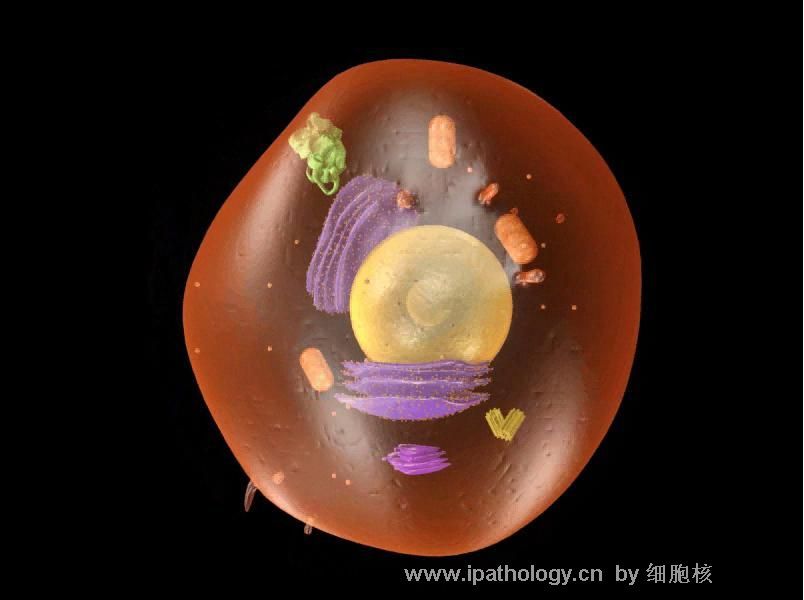| 图片: | |
|---|---|
| 名称: | |
| 描述: | |
- 江西省第34届病理学年会(2006年)读片会病例200612
-
The anatomic location of the lesion is identified as "subcutaneous", and the lesion permeates adipose tissue with "nerves traversing through the lesion". In addition to lymphoproliferative disorders, I would consider a few soft tissue malignancies in my differential diagnosis.
Lymph nodes normally exist in the medial aspect of elbow and may rarely be involved by a primary nodal lymphoma. With the large and multinodular confluent tumor at hand, it's difficult to determine whether it arose from a lymph node or not. This hypercellular malignant neoplasm involves the dermis and subcutis. Although I have not seen its relationship with dermal adnexa and epidermis, cutaneous anaplastic large cell lymphoma (ALCL, Ki-1 lymphoma) certainly deserves serious consideration. Most ALCL are of T/Null cell phenotype. Unlike the systemic (disseminated nodal form) ALCL in children and young adults (often with t(2;5)), primary cutaneous ALCL are ALK-negative, usually indolent, and not rapidly progressive unless it has evolved secondarily from peripheral T cell lymphoma, mycosis fungoides and lymphomatoid papulosis.
Because of their unique biologic behaviors, all lymphomas should be carefully classified and graded. Preferably, investigative immunohistochemistry of this case should include two T cell markers, two B cell markers, CD30, EMA and ALK-1. In my limited experience, large neoplastic cells in ALCL have horseshoe-like or multilobated nuclei, single or multiple nucleoli, and abundant pale or amphophilic cytoplasm. There usually are associated prominent apoptosis (even necrosis), and varying densities of admixed small lymphocytes and histiocytes. There appear to be scattered small lymphocytes in some of the photos. In my view, many neoplastic cells in this case are plasmacytoid. Plasmacytoid appearance is not specific for plasmacytoma, but I would add CD138, kappa and lambda light chains in my immunohistochemical workup.
A few soft tissue malignancies may show similar histopathology. They include synovial sarcoma, clear cell sarcoma of tendon and aponeurosis, and epithelioid malignant peripheral nerve sheath tumor (MPNST). Given the implications on different treatment and prognosis, I would recommend PAS stain and cytokeratin (AE1/AE3), EMA, CD99, S100, HMB45, Melan A, and MiTF in the immunistochemical workup. FISH testing for t(12;22) and t(X;18) can aid in the diagnosis of clear cell sarcoma (of tendon and aponeurosis) and synovial sarcoma, respectively.
I look forward to hearing more about this interesting case.

聞道有先後,術業有專攻
-
学习mjma老师的讲解并试译如下:
病变的解剖部位被确定在“皮下”,病变穿插脂肪组织并且有“神经穿过病变”。除了淋巴(组织)增生性病变之外,我会考虑一些软组织病变作为鉴别诊断。
肘中部正常存在淋巴结并可能罕见地与结内淋巴瘤有关。遇到一个大的、多结节性融合肿块,难以决定这是否来自淋巴结。这一高度富于细胞的恶性肿瘤与真皮和皮下组织有关。尽管我未见到它与皮肤附件和表皮的关系,皮肤间变性大细胞淋巴瘤(ALGL,ki-1淋巴瘤)肯定是应当认真考虑的。大多数ALGL是T/Null细胞表型。不像儿童和年轻成人的系统性(播散结节型)ALGL(通常存在t(2;5)),原发性皮肤ALGL是ALK阴性,通常惰性,不会快速进展,除非它是从外周T细胞淋巴瘤、蕈样霉菌病和淋巴瘤样丘疹病演变而来。
由于具有独特的生物学行为,所有淋巴瘤都必须细胞分类并分级。此例较合适的研究性免疫组化项目包括两个T细胞标记物,两个B细胞标记物,CD30,EMA,和ALK-1。在我有限的经验中,ALGL中大的肿瘤细胞有马蹄形或多叶状核,单个或多个核仁,丰富的苍白或双嗜性胞浆。通常伴随显著的凋亡(甚至坏死),并有不同密度的小淋巴细胞和组织细胞相混杂。一些图片中似乎有散在的小淋巴细胞。我的观点,此例中许多肿瘤细胞是浆细胞样的。浆细胞样外观不是浆细胞淋巴瘤所特有的,但我会在免疫组化检查中增加CD138、κ和λ轻链。
一些软组织恶性肿瘤也会显示相似的组织病理学,包括滑膜肉瘤、腱鞘和腱膜的透明细胞肉瘤、上皮样恶性外周神经鞘瘤(MPNST)。既然涉及不同处理和预后,我建议做PAS染色和CK、EMA、CD99、S100、HMB45、Melan A、和MiTF等免疫组化检测。FISH检测t(12;22)和t(X;18)分别对诊断透明细胞肉瘤和滑膜肉瘤有帮助。
我期盼这一有趣病例的更多意见。

华夏病理/粉蓝医疗
为基层医院病理科提供全面解决方案,
努力让人人享有便捷准确可靠的病理诊断服务。
-
zhongshihua 离线
- 帖子:1608
- 粉蓝豆:0
- 经验:1651
- 注册时间:2006-09-11
- 加关注 | 发消息










































